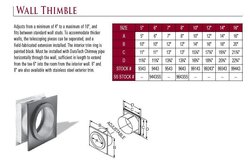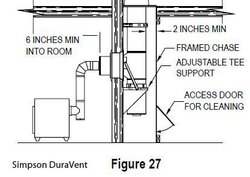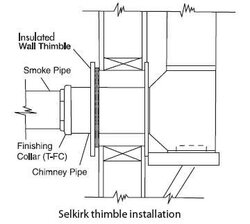I've pretty much resigned myself to missing burning this winter unless I either find someone selling legitimately seasoned wood (not likely) or I buy liberty bricks or similar. I've got months of summer left but I doubt it's enough to season anything and I've been far too busy.
So now that we're at the "submit drawings to the township and wait" part of this, I've worked out a lovely plan for the stove but I'm at a loss for two things:
1) How far up the wall should the thimble be? Assume double walled stove pipe. Ideally this should be as close to the ceiling as possible.
2) Double wall? Triple wall? Brand?
I do want galvanized because I want to be able to paint it, but I'm curious if there's any difference in the brands or construction. If there's stong opinion one way or another I'll certainly weigh it in. If they're all about the same I'll probably just go with whatevers cheapest and paintable.
So now that we're at the "submit drawings to the township and wait" part of this, I've worked out a lovely plan for the stove but I'm at a loss for two things:
1) How far up the wall should the thimble be? Assume double walled stove pipe. Ideally this should be as close to the ceiling as possible.
2) Double wall? Triple wall? Brand?
I do want galvanized because I want to be able to paint it, but I'm curious if there's any difference in the brands or construction. If there's stong opinion one way or another I'll certainly weigh it in. If they're all about the same I'll probably just go with whatevers cheapest and paintable.





